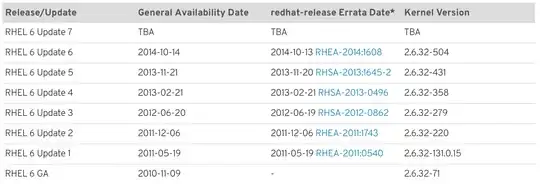I have an HP ProLiant BL460C Gen8 having real hardware RAID.
I am trying to install Red Hat Enterprise x86_64 bit on an HP ProLiant (iLO 4) server with an Array of 2 hard drives configured as RAID1.
The built in server manager (intelligent provisioning ) allows me to change the setting and configuration of the storage array between RAID0 and RAID1
But RED HAT starts the process of the clean install, and i get to select the time, language, etc. but it stops because it could not detect a storage disk. All it can see is the virtual boot drive that it creates while booting to allow it to run (capacity 256 MB).
I tried to manually/custom add the storage setting but again, all available storage is 250 mb and all found devices is 1.
What am I doing wrong?

